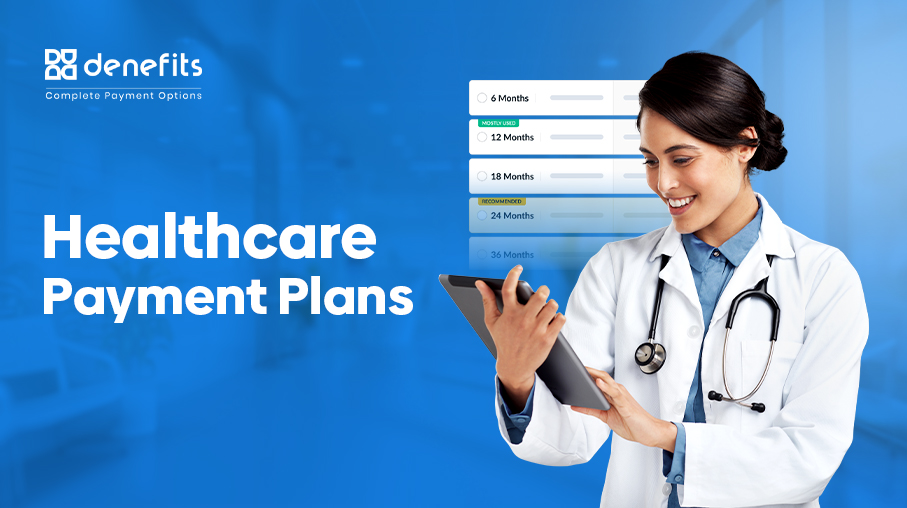
Have you wanted to get a medical procedure done but don’t know where to get help from?
According to a recent survey, about 40% of people cannot cover a $400 unplanned emergency. And, approximately a quarter of Americans have a family member who has skipped necessary medical care because of the expense.
Unfortunately, missed doctor visits can lead to even more costly events, such as hospital admissions, trips to the emergency room, or death. In some cases, many healthcare providers will refuse to schedule new appointments if a patient has unpaid bills from a previous service.
This guide will help you to understand patient payment plans.
What are Patient Payment Plans?
Patient payment plans give you the flexible option to pay for medical procedures over time rather than all at once, usually over a span of several months.
This offering certainly isn’t new and has been in the market since the nineties and has since become popular for procedures such as cosmetic surgery.
Traditionally, patients would finance medical expenses using credit cards or by taking out a small loan. However, this route has become far less appealing, especially with sky-high interest rates. The balance on your credit card can lead you to a never-ending pool of debt that is hard to recover from, making it difficult to qualify for future lines of credit or loans.
With these downfalls of traditional financing, businesses have capitalized on offering and providing flexible payment plan options by partnering with third parties like Denefits, making care affordable for their patients.
Benefits of Patient Payment Plans:
1. Patient First
An aching back shouldn’t be overlooked, and with the payment plans option, you can put your health first and get the necessary medical treatment to continue moving forward with your life.
Patient payment plans eliminate financial pressure and uncertainty when deciding on future procedures, giving you access to needed care.
2. Affordability
Aside from immediate care, not paying for medical procedures that cost over $400 all at once is alleviating, especially when there are other bills to worry about.
Your budget is protected from unexpected large expenses and prevents financial strain.
Some financing programs have bonuses, such as no annual fees depending on the provider.
Patient Payment Options
Here are just some of the patient healthcare finance methods available for you to explore.
1. Medical Credit Cards
Medical credit cards are similar to traditional credit cards but are strictly for medical expenses, such as dental, healthcare, or veterinary costs. Typically medical credit cards offer 0% short-term interest options followed by high-interest rates ranging from 14%-18%. However, with high interest rates, it can be less appealing. Offers will vary depending on your credit score and history.
Remember that medical debt doesn't appear on your regular credit report unless you have a significant past-due payment.
2. Internal Financing Programs
This financing program is offered through the medical provider who will be rendering the services. They are responsible for administering and managing their programs on an ongoing basis; for medical providers to offer this option, the practices need a written patient financing policy that is management-approved.
The practice will also provide a list of eligibility criteria, distributed on request. There are two main types of internal patient medical financing programs: direct pay and co-signing.
- Direct pay is when patients pay the full cost upfront and then have installments added to their accounts over time based on the provider’s policy.
- Co-signing is when a patient gives their credit information to the company. By doing this, a portion of the procedure will be paid upfront.
Risks of Internal Patient Financing Programs for Practices
From a service provider perspective, several risks are related to internal medical patient financing programs.
- Loan Defaults: When patients cannot make the payments, they can default on their loans, resulting in huge debt and sometimes bankruptcy.
- Income and credit score: When a company has sole responsibility for patient financing, it is important to consider credit scores and income. Being unable to estimate the likelihood of a patient repaying a loan can leave the business at a loss.
To solve the risks of internal patient financing, many healthcare providers choose payment plan software that takes responsibility for managing patient payments.
Providers like Denefits help practices offer payment plans to their patients without any credit checks. Moreover, with a 95% approval rate, Denefits helps patients comfortably pay for their treatment without worrying about rejections. And businesses get payment protection, so payments keep coming in.
Bottom Line
Take advantage of different patient payment plans to put your health first. More health organizations are beginning to use software like Denefits to provide easier access to healthcare and make payments easier.
Request a callback to learn more about Denefits.


